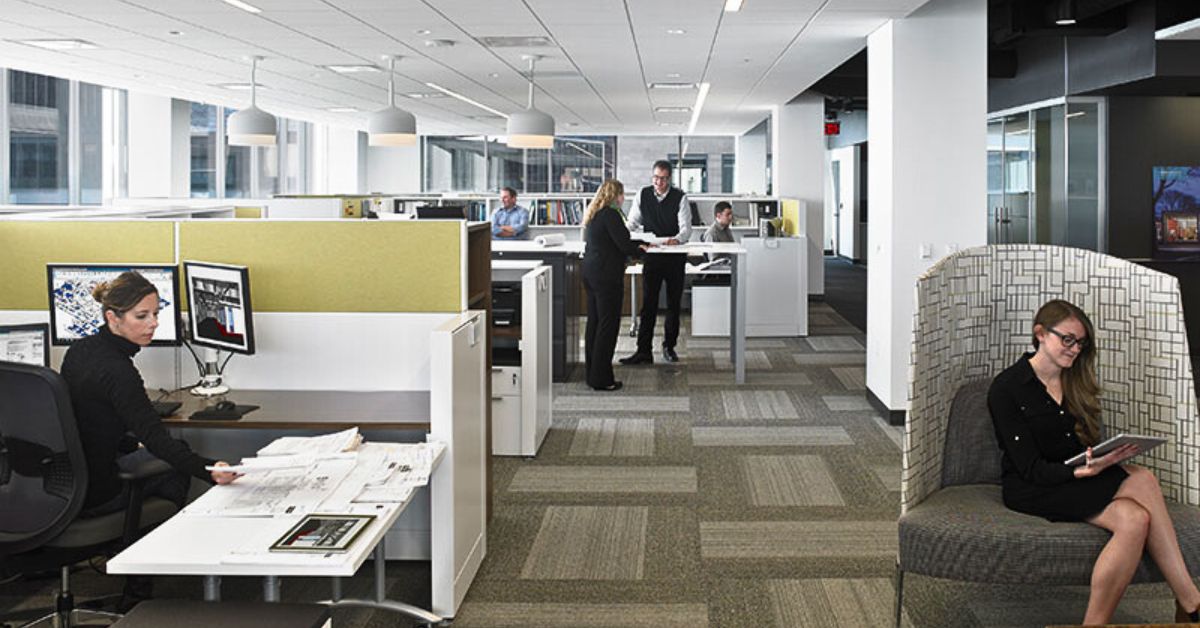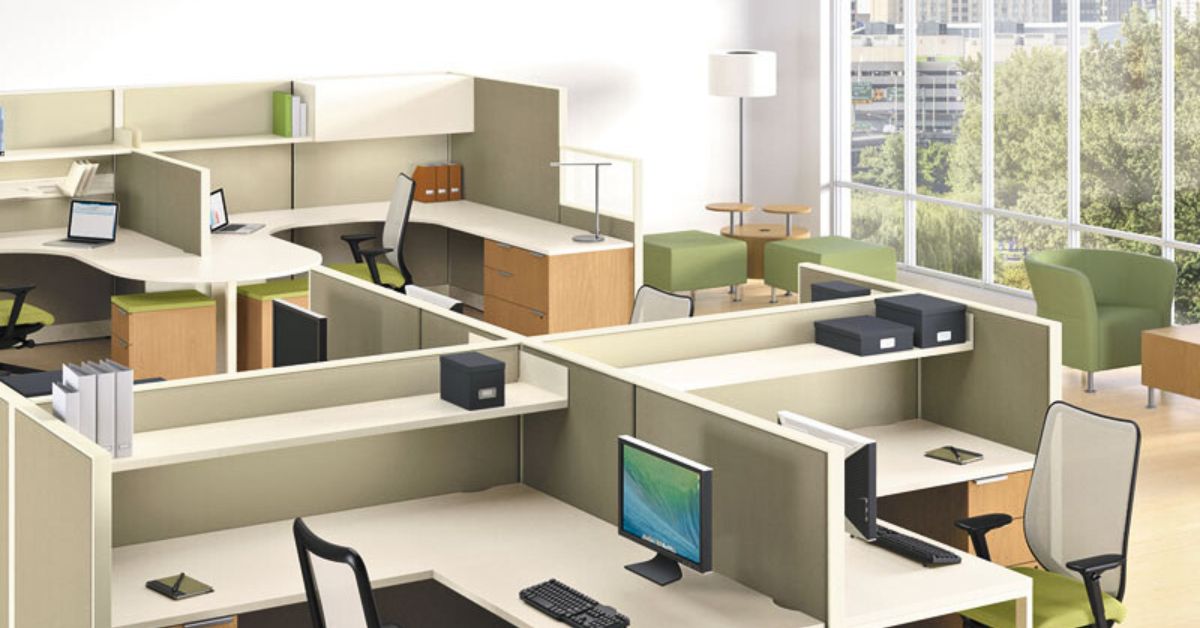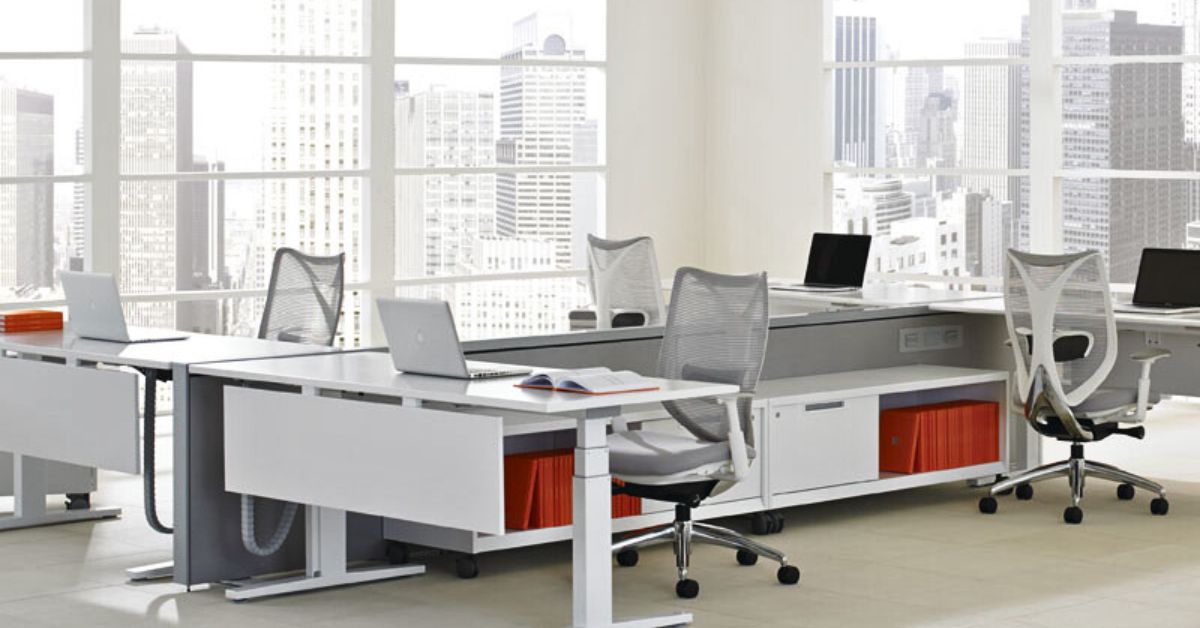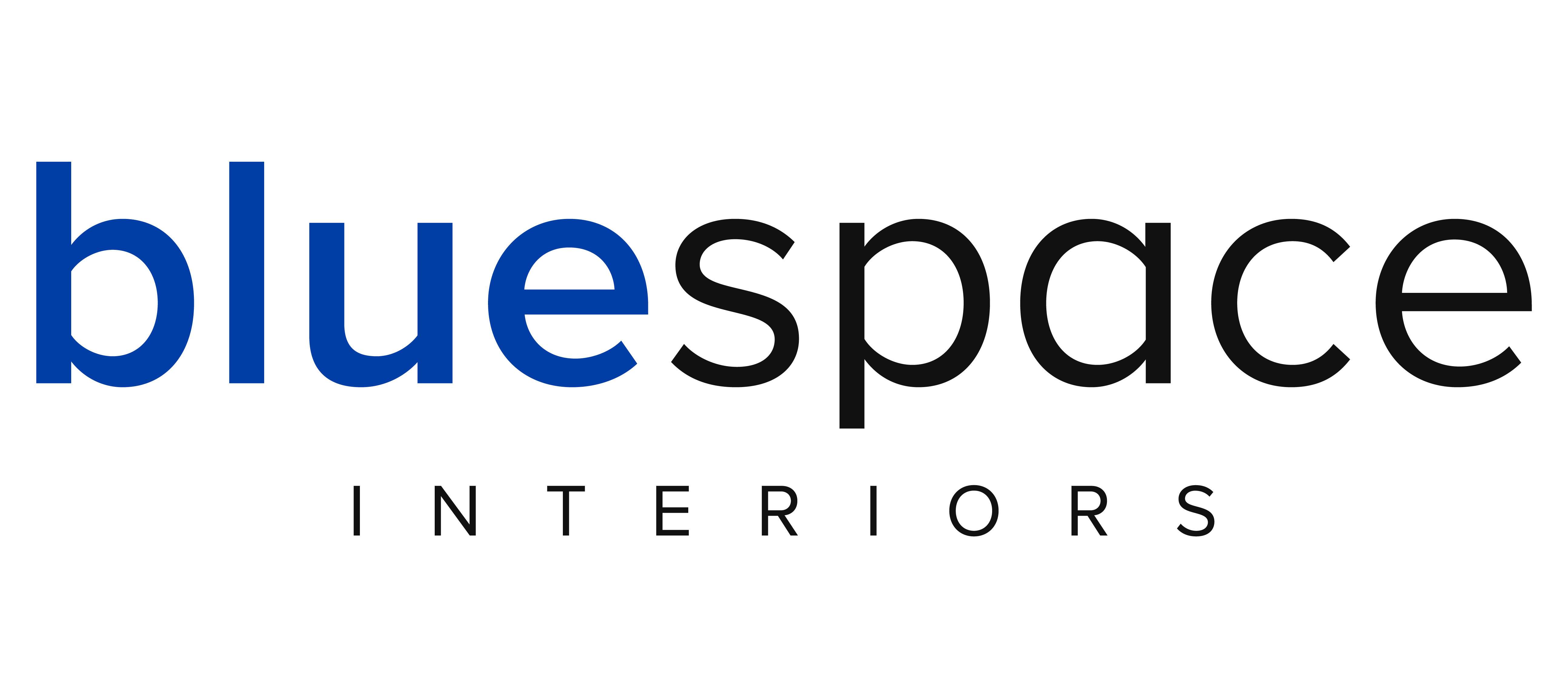The Role of Lighting in Office Design and Furniture Layout

Good office design is about creating an environment where workers feel inspired and comfortable. Amid discussions of ergonomic chairs, carefully curated breakout spaces, and collaborative open office designs, it’s easy to overlook one influential factor.
Lighting in office design and furniture layout shapes a workplace’s culture and efficiency. Let’s explore why lighting matters so much in an office, how it interacts with furniture layout, and how to implement it effectively.
Why Does Lighting Matter in the Office?
Lighting contributes to the well-being of employees in more ways than you might realize. Even small shifts can have a big impact on health, happiness, and productivity.
Healthier Working Environment
Poor lighting, whether dim or overly harsh, forces workers to overcompensate with their vision, fostering discomfort and diminishing concentration. It can lead to eye strain, headaches, and fatigue. Sufficient lighting, on the other hand, reduces those complications because people can see their workspaces clearly.
Happier Employees
Workplace satisfaction is directly tied to the environment in which employees operate. Overhead fluorescent lights, for example, have been linked to heightened stress and reduced morale.
Conversely, well-lit offices with layered lighting options—ambient, task, and accent lights—foster an inviting, comfortable atmosphere. Employees in these settings tend to feel more positive and motivated.
Increased Productivity
Good lighting plays a crucial role in boosting productivity by minimizing mistakes, enhancing focus, and optimizing task efficiency. In fact, lighting choices can even influence our biological rhythms, helping employees stay in sync with their natural energy cycles.
By establishing ample, well-designed office lighting, workplaces can create an environment that supports people’s productivity and comfort.
Reduced Energy Consumption
Energy-efficient lighting, such as LED technology, offers significant cost savings and environmental benefits compared to traditional incandescent bulbs. These lights consume far less electricity, reducing energy bills and lowering your office’s carbon footprint.
But decreased energy consumption isn’t the only advantage of LED lights. By investing in efficient lighting, businesses will contribute to a more sustainable future. LEDs have a much longer lifespan than incandescent bulbs. Your office can use the same LEDs between five and ten years, which prevents products from entering landfills frequently.
How Does Lighting Interact With Furniture Layout?
Lighting and furniture aren’t independent aspects of office design—they work in tandem to either elevate or disrupt the harmony of a space. A comprehensive understanding of how the two interact can help businesses achieve a balance that works functionally and aesthetically.
Set the Tone
Consider an open office with vivid furniture and industrial desks. Affordable yet stylish pendant lights hanging low over shared workstations amplify this modern aesthetic while creating zones where tasks feel compartmentalized yet connected.
Similarly, warm track lighting in a lounge area softens the sharp edges of formal furniture setups for an inviting atmosphere. The lighting shapes the space’s tone, subtly influencing productivity and creativity without employees even realizing it.
Highlight Focal Points
Strategic lighting directs attention to focal points, much like framing key ideas or messages in a presentation. Whether directing a client’s gaze toward a brand wall or highlighting collaborative spaces within a setup of open office furniture, lighting can underscore the most important elements of your layout.
Enhance Visual Flow
One of the challenges of office design is creating visual fluidity that guides employees from one section of the office to another. To encourage movement and coordination, try layered lighting. It offers a natural accompaniment to well-thought-out furniture layouts by seamlessly transitioning ambient light between workstations, breakout areas, and individual private offices.
This approach removes harsh lighting divides and fosters a natural flow. For example, soft illumination in passageways paired with bright task lighting in workstations ensures employees instinctively follow the room’s rhythm.

Lighting Styles for Different Layouts
The composition of an office—whether open, private, or hybrid—necessitates a tailored lighting design that complements its unique arrangement and purpose. Addressing specific needs ensures optimization for both form and function.
Cover Open Office Layouts
Open offices are designed for collaboration, visibility, and transparency, requiring lighting that is consistent yet modifiable. Overhead lighting systems such as suspended linear luminaires or LED panel lights work well to flood collective areas evenly without becoming intrusive.
You can integrate task lighting, such as adjustable desk lamps, to further accommodate individual work requirements while complementing the open office furniture for a cohesive appearance.
Distinguish Breakout Areas
Breakout areas in an office serve as spaces for relaxation, informal meetings, or creative brainstorming. These areas benefit from softer, ambient lighting to create a welcoming and relaxed atmosphere.
Pendant lights, floor lamps, or wall sconces can add a touch of personality while differentiating these zones from the primary workspace. Incorporating dimmable lighting options allows for flexibility, adapting the mood of the space to its intended use.
Allow Personalization in Private Offices
Private offices represent spaces for focused work and individual productivity. Here, lighting personalization takes center stage, offering a blend of static and adjustable lighting options that empower occupants to optimize their environment.
From dimmable desk lamps to elegant wall-mounted fixtures, employees should have the ability to tailor their space based on task requirements and personal preferences. Adding layers of warm lighting enhances comfort without sacrificing professional sharpness.
Balance Priorities in Hybrid Environments
Hybrid workspaces, combining elements of open layouts and private zones, need versatile lighting solutions. Layered lighting provides adaptability. For example, overhead fixtures can provide general illumination, while movable task lights or LED strips can offer localized lighting as needed.
Install smart lighting systems with adjustable brightness and color temperatures to let employees tailor their environment to their tasks, boosting comfort and efficiency.

Office Lighting Best Practices
While lighting customization has its appeal, some universal best practices transcend specific layouts or individual preferences to create the perfect office lighting design.
Provide Adequate Lighting
Ensuring consistent light levels across workspaces is crucial to avoid the productivity pitfalls of underlit spaces. Every corner of the office should be adequately illuminated, from collaborative zones to quiet nooks where solo work takes place.
Bring In Natural Light
Allowing sunlight in through strategically placed workstations near windows or skylights not only saves energy but also positively impacts workers’ circadian rhythms. Architects, designers, and office managers should prioritize layouts that maximize sunlight access to increase employees’ productivity and satisfaction at work.
Avoid Glare
While adequate light is important, too much light—or more specifically, glare—creates visual discomfort and can disrupt concentration. Thoughtfully integrating fixtures with diffusers, along with workstation placement that minimizes direct window reflections, helps reduce glare.
Offer Dimming Options
Dimmable lighting systems are an asset. Employees should have control over light intensity to adjust for different tasks or times of the day. Install dimming systems in both shared and personal spaces to make the office environment infinitely more customizable.
Illuminate Your Office Design Strategy
It may not be the most conspicuous part of office design, but the role of lighting in office design and furniture layout is undeniable. Done right, great lighting integrates seamlessly with a wide range of styles and layouts to make workspaces more productive and satisfactory.
Reach out to bluespace interiors to design a workspace that motivates and supports your team. Together, we can create an office environment that sparks creativity and drives success.

